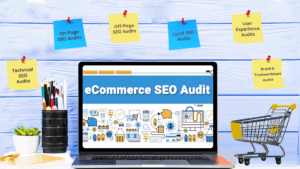When it comes to business-to-business websites, first impressions matter more than you think. B2B web design is not just about pretty visuals, it is about creating a site that speaks directly to the decision-makers at other companies. Your website becomes your best salesperson, working 24/7 to convert leads into long-term business clients. But how exactly is business to business web design different from other types of website development?
In this article, we will explore the real essence of web design, what makes it effective, and how you can build a site that not only attracts but also converts business clients. Whether you are a startup agency or a growing B2B company, this guide will help you create a website that drives results.
Understanding What B2B Web Design Really Means
Web design refers to the process of creating websites that are tailored for companies selling products or services to other businesses. Unlike B2C websites, where you are appealing to the emotions of a general customer, B2B websites need to present logic, value, and trust right from the start.
You are not just targeting a single consumer. You are speaking to multiple stakeholders, procurement managers, CTOs, CEOs, and marketing directors. Each of them has different questions and priorities.
That is why business to business web design demands more strategy, deeper content, and a smoother user journey.
The Key Elements That Make a B2B Website Successful
Clear and Concise Value Proposition
Your homepage needs to answer this question within 5 seconds: “What does your business do and why should I care?”
- Use a short, powerful headline
- Support it with a subheading that explains what problem you solve
- Add a clear call-to-action button like “Get a Quote” or “Schedule a Demo”
Strategic User Journey
Unlike impulse purchases in B2C, B2B buying journeys are longer. Your website should guide visitors step-by-step from awareness to consideration to decision.
- Use navigation that makes sense to first-time visitors
- Create landing pages that match the intent of different user personas
- Offer lead magnets like case studies, whitepapers, or free audits
High-Quality and Useful Content
Your content should show that you understand the pain points of businesses. This is your chance to position your brand as a helpful expert, not a pushy seller.
- Use blog posts, solution pages, and industry-specific examples
- Create content for different decision stages (e.g., “How to Choose a CRM for Logistics Firms”)
- Don’t forget to keep your tone professional but human
For a strong example of high-converting content built for service industries, check out our detailed guide on mastering digital marketing for professional services.
Design Practices That Work in B2B
Clean and Modern Visuals
B2B audiences appreciate simplicity and clarity. Avoid anything flashy that slows down your site or distracts from your message.
- Stick to a clean layout with plenty of white space
- Use professional colors and typography that reflect your brand
- Avoid unnecessary animations and effects
Mobile Responsiveness
More and more executives are browsing from mobile devices. If your site is not mobile-friendly, you might be losing business without even knowing it.
Make sure your site looks great and loads quickly on:
- Smartphones
- Tablets
- Laptops
Building Trust Through Your Website
Trust is everything in B2B. No one wants to risk their company’s time and money with an unprofessional partner. Use these elements to build instant credibility:
Real Case Studies and Testimonials
Instead of generic quotes, share real stories with measurable results.
- Add client logos (with permission)
- Share detailed case studies showing how your services helped other businesses
- Include a quote from a decision-maker if possible
You can see how we approach trust and transparency in our page onaffordable digital marketing services notice the real examples and honest presentation.
Certifications and Partnerships
Do you have any certifications, awards, or strategic partnerships? Display them proudly. This gives decision-makers a reason to trust you faster.
Lead Generation Features You Should Not Ignore
Your B2B website is not just for showing who you are. It should be a lead-generation machine. Here is what you need:
Effective Calls to Action
- Use action verbs like “Schedule a Call” or “Get Your Free Audit.”
- Avoid weak CTAs like “Learn More” unless they link to a landing page
Forms That Convert
- Keep them short and easy to fill out
- Use smart forms that adapt based on the page or service
- Offer something valuable in return, like a consultation, free trial, or downloadable guide
SEO and Content Strategy for B2B Success
SEO plays a huge role in driving the right traffic to your B2B website. But it is not just about ranking, it’s about getting quality leads.
Keyword Research for Business Intent
Focus on keywords that decision-makers actually search for, such as:
- “CRM solution for B2B logistics”
- “Enterprise project management software”
- “B2B web design agency for SaaS companies”
Make sure your keyword usage is natural. Overstuffing keywords can hurt your rankings and your user experience.
Consistent Blogging and Resource Hubs
You need a content engine that keeps your site active and helpful. Create a blog or resource hub to:
- Answer industry-specific questions
- Share expert insights and how-to guides
- Show up for long-tail searches
We recommend reviewing your content quarterly. You can follow the steps we outlined in our guide to digital marketing audit services to stay updated.
Common Mistakes to Avoid
- Trying to be too clever instead of clear
Fancy wording might confuse visitors. Keep it simple and direct. - Focusing only on design without functionality
Your site might look good, but if it is slow, buggy, or hard to navigate, you are losing leads. - Not updating content regularly
A stale website makes your business look inactive. - Forgetting about internal links
Help visitors explore more with logical internal links across pages. For example, linking to our digital marketing services for cardiology when talking about healthcare industry solutions.
Best Practices for a B2B Web Design Project
When planning your B2B website, consider these proven best practices:
- Conduct interviews with your sales team and current clients to better understand their needs
- Map out your ideal customer journey from first visit to final conversion
- Choose a CMS (Content Management System) that allows for easy updates and scalability
- Prioritize speed, security, and mobile optimization
For a deeper understanding of how web design fits into your broader strategy, check out this insightful resource on what is B2B web design by WebFX.
Final Thoughts on Creating a B2B Website That Works
At the end of the day, B2B web design is about blending strategy with empathy. It is not just about design, it is about solving real problems for real businesses. When done right, your website becomes your best salesperson, your strongest brand ambassador, and your top lead generator.
If you are planning to redesign your B2B website or create one from scratch, remember: it is not a one-size-fits-all job. Take the time to understand your audience, map their journey, and offer them an experience that feels made just for them.
Frequently Asked Questions
What is B2B web design?
It is the process of building websites for companies that sell products or services to other businesses.
How is B2B different from B2C?
B2B focuses on logic, value, and trust, while B2C appeals more to emotion and quick buying decisions.
Why is user journey important in B2B websites?
It guides business buyers through a longer decision-making process, helping convert visits into leads.
Do B2B websites need to be mobile-friendly?
Yes, many decision-makers browse from phones or tablets, so mobile responsiveness is critical.
What should a B2B homepage include?
A clear value proposition, strong headline, supportive subtext, and a visible call to action.








